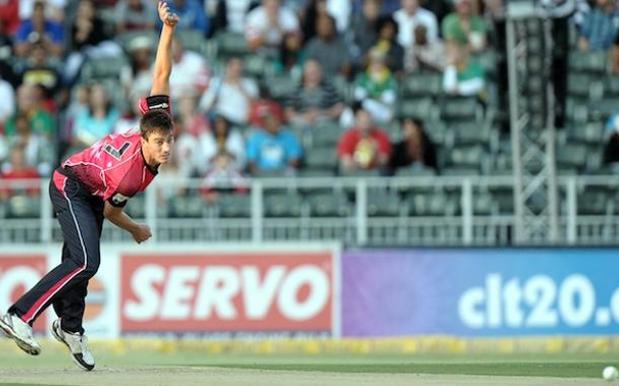
Cricket purist have argued since its inception that T20 cricket was bad for your mental health but is Pat Cummins’ second consecutive summer on the sidelines an indication that the shorter forms of the game place extra pressures on the body?
Where former Test players like Darren Lehman and Carl Rackemann have spoken out against reduced workloads and rotation policies, Cummins and fellow emerging quick James Pattinson have pointed to the increased focus on the income-generating limited over forms of the game as a possible explanation for the increased number of bowlers breaking down over the past few seasons.
Diagnosed with stress fractures in his lower back, Cummins has played very little in the way of first-class cricket over the past year. The cricket he has played has been of the limited overs variety. Ironically, while bowling far fewer overs, Cummins believes that this brand of bowling has placed more pressure on his body due to the adjustments made to his action as to adapt to the different ball and different tactics. “One thing I noticed was I might’ve been falling away a bit more than say a year ago. When I’m bowling with a red ball I try to swing it and when I’m swinging the ball everything’s going well,” Cummins said. “But when you’re bowling cross seamers with a white ball you kind of fall into bad habits maybe.”
Coming into last summer, the same issues of bowler burn out, headlined by another season ending injury to Cummins, were the major talking points. As we haven’t played a Test since the West Indies tour earlier in the year, Test match cricket cannot be blamed for burnout and other players, such as Pattinson agree that the limited over varieties of the game did place unique pressures on the bowlers body. “I tend to get a bit sorer when I do play one-day cricket because you’re trying different balls, you’re coming wide of the crease, you’re trying to bowl slower balls,” said Pattinson, 22. “Your action changes when you do that. You go out there and bowl four overs at extreme pace (in T20) and you’re trying all those things, it does have an impact on the body when it’s not used to doing that sort of stuff. The good thing about Shield cricket is … you just hit the right spot over and over again and your body can get into a rhythm.”
While conceding that limited over cricket had it’s own challanges, Pattinson stopped short of laying complete blame on the white ball. Pattinson hinted that it should be analysed on a case by case basis with Cummins experiencing many of the same complications that he endured early in his career “I was in the same position as him at 19. I had a couple of stress fractures. It’s not a normal thing to bowl 150km/h at 19 years of age.”
It’s dicey topic. In a way T20 cricket, along with the re-emergance of competitive English and South African teams, has re-sparked interest in Test match cricket. But the shortened forms are generating more money, for players and the game as a whole, so any move to reduce limited overs cricket is unlikely. Perhaps T20 will evolve into the domain of the wily veteran. It’s not like Brett Lee, Shane Warne, Matt Hayden, or the Hussey’s have been shown up by the younger crop of players. If anything, the extra ammo in their bag of tricks ensured they were more successful.
Unfortunately it’s too late his season. Coming up against the best pace attack in the world, Cummins would have been a handy ace up the sleeve. He may not have been used until they hit WACA but there is every chance the series will be on the line and a bowler of Cummins’ ability could be the difference.
Image By STEPHANE DE SAKUTIN/Getty Images



